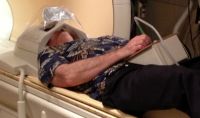A new report by Global Industry Analysts on the US and European Computer Aided Detection (CAD) markets has been released. The CAD market in the US is projected to reach US$323 million by 2018, driven by increasing prevalence of cancer, proven efficiency of the technology in breast cancer detection, and development of advanced technologies.
CAD technology not only helps to increase the detection of anomalies but also in accurate interpretation of images by clearly marking the areas using an automated process carried out by CAD algorithms.
Breast cancer detection is expected to remain the leading application market for CAD systems, driven by rising installations of these systems in ultrasound CAD, mammography and MRI applications. With advancements in technology, CAD’s application has expanded to include colon, lung, prostrate and liver cancer detection. Use of CAD in detection of lung and colon cancers is gaining momentum driven by availability of new innovative products in the market.
Advancement in digital imaging techniques and improved efficiencies in CAD solutions are paving the way for enhanced adoption of CAD in imaging. Major advances being witnessed in the area of CAD include ease of integration with imaging modalities from multiple vendors, enhanced display aspects, manipulability of images, image viewing and management speed. In order to further expand efficiencies of CAD systems, vendors are focusing on development and upgrade of existing CAD software. Few manufacturers of imaging modalities are integrating CAD capabilities within their imaging systems to increase efficiency of the overall radiology workflow.
Despite gaining popularity over the years, CAD continues to remain the second choice of radiologists after mammography. With the inclusion of a patient context element, vendors of CAD systems aim to make the technology the first choice of radiologists. Patient context requires manufacturers to integrate vital patient information such as medical history of the patient and information regarding prior diagnoses and mammograms, among others, to enable radiologists to make appropriate follow-up decisions. Another approach to achieve the first reader status is the integration of an image database for reference, which is expected to emerge as an important tool for informed diagnosis.
The U.S. is projected to be the fastest growing market for CAD growing at a projected compounded annual growth rate of 9.7% over the analysis period. The FDA’s release of final guidance providing clarity to manufacturers on clinical study requirements and approval for CAD devices and software is expected to lead to a surge in approvals for new products and applications over the following years. Meanwhile, rising awareness of the benefits of cancer detection in the early stages is expected to enhance the significance of CAD technology in Europe. However, the ongoing economic crisis in the region is placing significant pressure on the European CAD market.
Latest Articles
Imaging, IT, Markets
A new report by Global Industry Analysts on the US and European Computer Aided Detection (CAD) markets has been released. The CAD market in the US is proje...



























